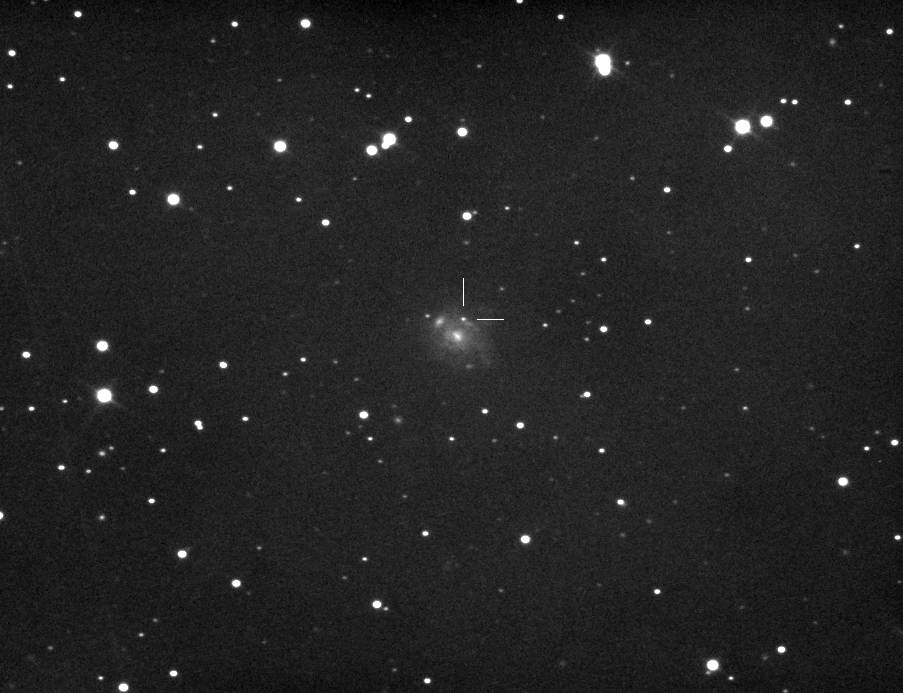SN2015am (PSN J02090990+3159515) located near UGC 1641, discovered by Paolo Campaner on behalf of ISSP.
, CBAT TOCP discovered 2015/08/13.081 by Paolo Campaner (ISSP)
Found in UGC 1641 at R.A. = 02h09m09s.90, Decl. = +31°59'51".5
Located 3" west and 12" north of the center of UGC 1641
Mag 18.0:8/16, Type II (z=0.0167)
See the spectrum of SN (Padova-Asiago spectrum)

Asiago spectroscopic classification of PSN J02090990+3159515 in UGC 1641
ATel #7909;
Questo indirizzo e-mail è protetto dallo spam bot. Abilita Javascript per vederlo.
on 14 Aug 2015; 14:21 UT
Credential Certification: Lina Tomasella (
Questo indirizzo e-mail è protetto dallo spam bot. Abilita Javascript per vederlo.
)
Subjects: Optical, Supernovae
The Asiago Transient Classification Program (Tomasella et al. 2014, AN, 335, 841) reports the spectroscopic classification of PSN J02090990+3159515 in the galaxy UGC 1641, discovered by P. Campaner (ISSP). Informations on this transient are available from the "Bright Supernova" website (http://www.rochesterastronomy.org/snimages/) and the CBAT Transient Object Followup Reports (http://www.cbat.eps.harvard.edu/index.html). The observation was performed with the Asiago 1.82 m Copernico Telescope (+AFOSC; range 340-820 nm; resolution 1.4 nm).
Name | Discovery | z | Type | Observation date | Phase | Notes PSN J02090990+3159515 | 2015-08-13.081 | 0.0167 | II | 2015-08-13.980 | ~3-4 weeks | (1)
(1) The spectrum shows P-Cygni lines of H, Fe II and Na I, typically observed in Type II SNe during the H recombination phase. However, these lines in PSN J02090990+3159515 are very narrow. The expansion velocity of the ejecta is very low, when compared e.g. with the low-velocity Type IIP SN 2005cs (Pastorello et al. 2009, MNRAS, 394, 2266). From the minimum of Halpha, we infer an ejecta velocity of about 2100 km/s (slightly lower, about 1700 km/s, from the minimum of Hbeta).
The classification was done with SNID (Blondin and Tonry 2007, ApJ, 666, 1024). The Asiago classification spectra are posted at the website http://sngroup.oapd.inaf.it.




